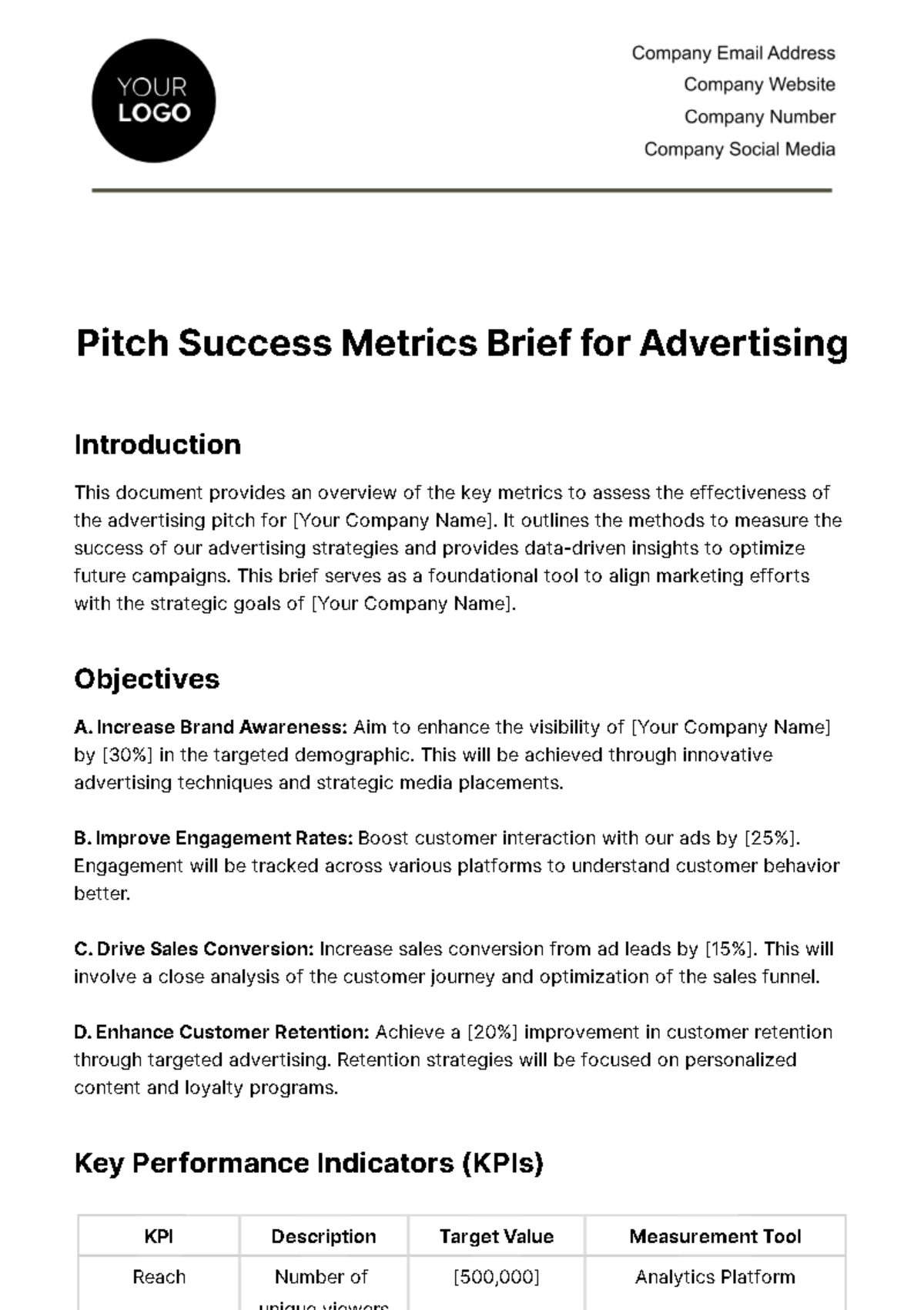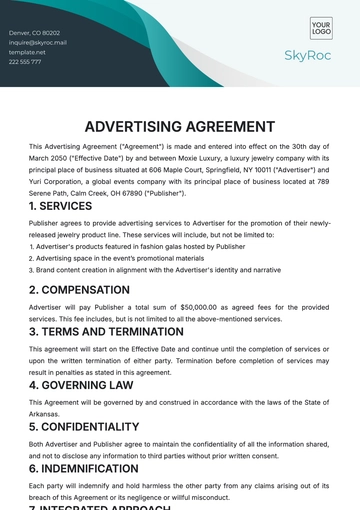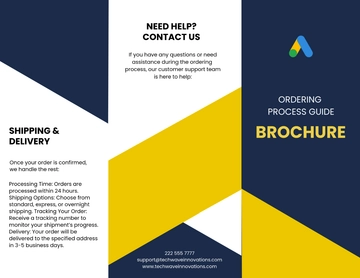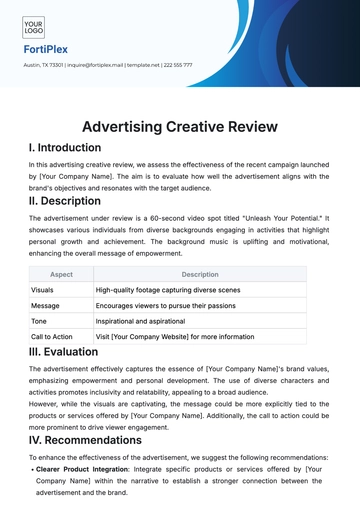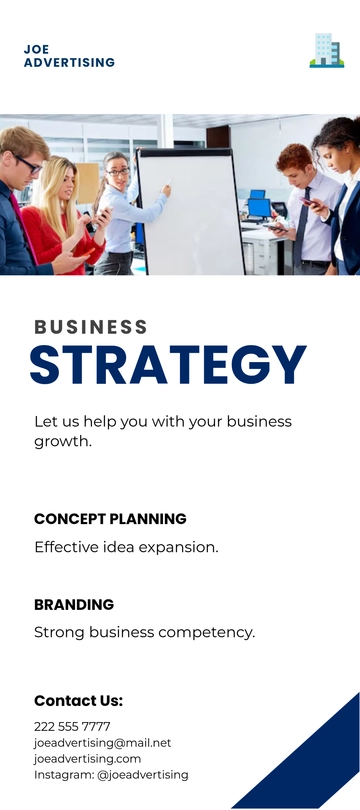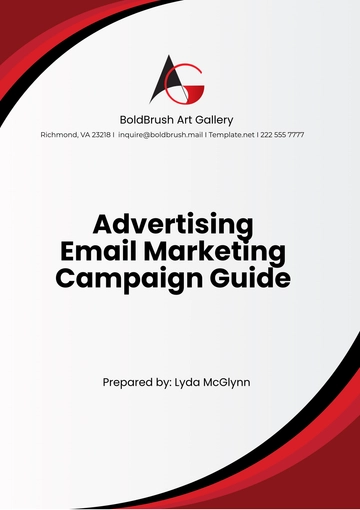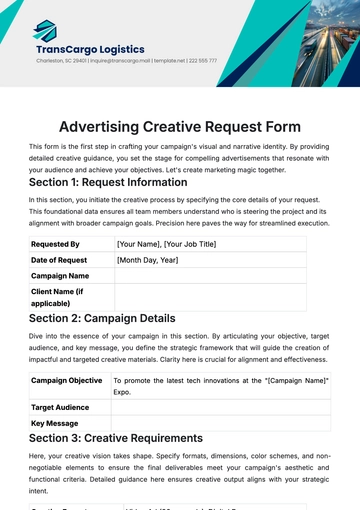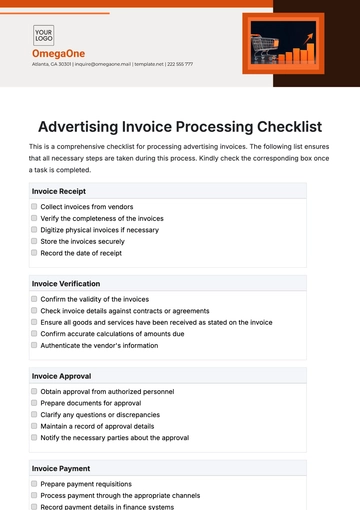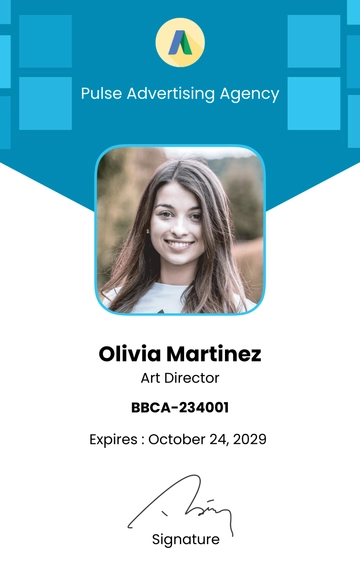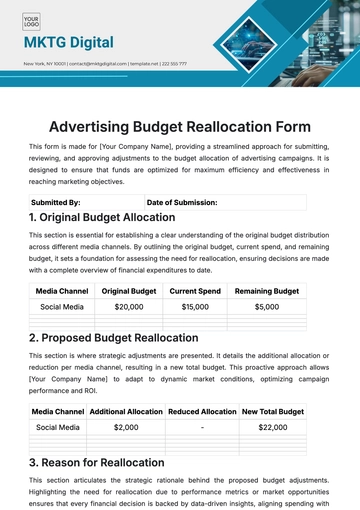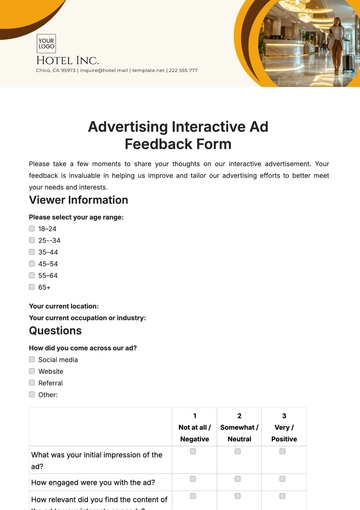Pitch Success Metrics Brief for Advertising
Introduction
This document provides an overview of the key metrics to assess the effectiveness of the advertising pitch for [Your Company Name]. It outlines the methods to measure the success of our advertising strategies and provides data-driven insights to optimize future campaigns. This brief serves as a foundational tool to align marketing efforts with the strategic goals of [Your Company Name].
Objectives
A. Increase Brand Awareness: Aim to enhance the visibility of [Your Company Name] by [30%] in the targeted demographic. This will be achieved through innovative advertising techniques and strategic media placements.
B. Improve Engagement Rates: Boost customer interaction with our ads by [25%].
Engagement will be tracked across various platforms to understand customer behavior better.
C. Drive Sales Conversion: Increase sales conversion from ad leads by [15%]. This will involve a close analysis of the customer journey and optimization of the sales funnel.
D. Enhance Customer Retention: Achieve a [20%] improvement in customer retention through targeted advertising. Retention strategies will be focused on personalized content and loyalty programs.
Key Performance Indicators (KPIs)
KPI | Description | Target Value | Measurement Tool |
Reach | Number of unique viewers | [500,000] | Analytics Platform |
Impressions | Total views of the ad | [2,000,000] | Analytics Platform |
Click-Through Rate (CTR) | Percentage of ad clicks | [5%] | Analytics Platform |
Return on Advertising Spend (ROAS) | Revenue generated per ad dollar | [$5.00] | Financial Reporting |
Each KPI is carefully chosen to reflect the most crucial aspects of the advertising campaign's success. Regular tracking of these metrics will ensure that [Your Company Name] stays on track to meet its advertising goals.
Strategies and Tactics
A. Targeted Content: Develop personalized ad content based on customer data and preferences. This will help in creating a more relevant and engaging experience for the audience.
B. Multichannel Distribution: Utilize various platforms like social media, email, and the web for wider reach. A diverse approach ensures maximum visibility across different customer touchpoints.
C. Creative Design: Innovative and eye-catching ad designs to attract more views and engagement. The creative aspect will differentiate [Your Company Name] in a crowded market.
D. Data-Driven Optimization: Regular analysis of campaign data to refine and improve advertising strategies. This approach ensures that the strategies remain effective and efficient over time.
Expected Outcomes
A. Brand Awareness: Estimated [30%] increase in brand recognition within the target market. This will significantly contribute to [Your Company Name]'s market position.
B. Customer Engagement: Anticipate a [25%] uplift in ad engagement, including likes, shares, and comments. Higher engagement is a strong indicator of customer interest and brand relevance.
C. Sales Conversion: Project a [15%] increase in sales conversion from targeted advertising. This reflects a direct impact on the company's bottom line.
D. Customer Retention: Predict a [20%] improvement in customer retention rates due to more personalized advertising. Enhanced retention signifies a strong brand-customer relationship.
Monitoring and Reporting
A. Weekly Analysis: Conduct weekly reviews of campaign performance using analytics tools. This allows for prompt adjustments and immediate improvements.
B. Monthly Reporting: Provide detailed monthly reports on KPIs and ROI to [Your Company Name] stakeholders. Regular reporting ensures transparency and accountability.
C. Quarterly Review: Comprehensive evaluation of advertising campaign effectiveness with recommendations for adjustments. These reviews will be crucial for long-term strategic planning.
Risk Management and Contingencies
A. Budget Overrun: Monitor ad spend closely; adjust strategies if ROI is below expected thresholds. This is essential to maintain financial health and campaign sustainability.
B. Market Shifts: Stay attuned to market trends; pivot strategies as needed to maintain ad relevance. Agility in response to market changes is key to staying competitive.
C. Technical Issues: Have contingency plans for any technical failures in ad distribution or tracking. Preparedness for such scenarios ensures uninterrupted campaign execution.
Conclusion
This Pitch Success Metrics Brief serves as a comprehensive guide to measure and analyze the effectiveness of [Your Company Name]'s advertising campaign. By focusing on key metrics and continuous optimization, we aim to achieve our objectives and drive significant growth for [Your Company Name]. The insights gained from this brief will be instrumental in shaping future marketing strategies.
Advertising Templates @ Template.net
